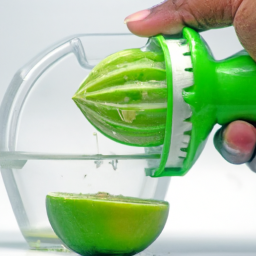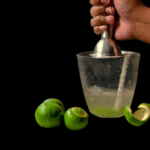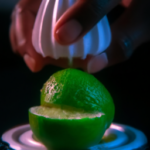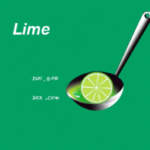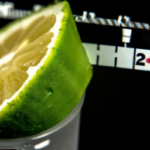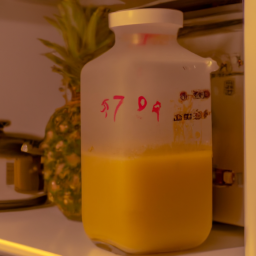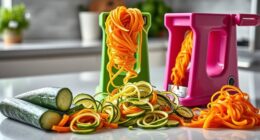I absolutely love using limes in my cooking, and there’s nothing quite like the zesty, tangy flavor that fresh lime juice brings to a dish. But if you’re like me, you may have struggled in the past to get the most juice out of your limes.
That’s why I’m excited to share my tips and tricks for juicing limes like a pro! In this article, I’ll guide you through the process of selecting the perfect limes, preparing them for juicing, and using both manual and electric juicers to extract as much juice as possible.
I’ll also share some creative ways to store and use leftover lime juice, as well as tips for incorporating lime juice into your favorite recipes. Whether you’re a seasoned cook or a beginner looking to add some zest to your dishes, this guide will help you get the most out of your limes.
So let’s get started!
Key Takeaways
- Look for heavy, bright green limes and avoid soft or brown-spotted limes
- Soften limes by rolling or microwaving before juicing
- Use manual, electric, or handheld juicers, with handheld press juicers being the most efficient
- Lime juice can be used in a variety of recipes, including cocktails, ceviche, guacamole, marinades, dressings, desserts, and baked goods.
Choosing the Right Limes
Want to make the perfect lime juice? Start by picking the juiciest limes you can find! Choosing ripe limes is crucial for getting the right flavor and acidity in your juice.
When picking limes, look for ones that are heavy for their size and have a bright green color. Avoid limes that are too soft or have brown spots, as these are signs that they are overripe and may not have as much juice.
There are different types of limes available, but the most commonly used ones for juicing are Persian limes and Key limes. Persian limes are larger and have a thicker skin, making them easier to juice. Key limes, on the other hand, are smaller and have a thinner skin, but are more acidic and have a stronger flavor.
Whichever type of lime you choose, be sure to pick ones that are ripe and in good condition. Now that you’ve chosen your limes, it’s time to prepare them for juicing.
Preparing Your Limes
Before juicing my limes, I always make sure to rinse them thoroughly and dry them off with a clean towel. This ensures that any dirt or debris is removed and won’t contaminate the juice.
To make juicing easier, I also like to soften the limes by rolling them on a hard surface with the palm of my hand or microwaving them for a few seconds. These simple steps make a big difference in the outcome of my lime juice!
Rinse and Dry Your Limes
After picking up the limes, make sure to give them a good rinse and dry to remove any dirt or residue that may have accumulated on the skin. This is an important step that shouldn’t be overlooked as it can affect the taste and quality of your lime juice.
There are different drying techniques that you can use, but the most effective is to let the limes air-dry at room temperature. When drying the limes, avoid using a towel or cloth as it can transfer unwanted flavors onto the skin. It’s also not recommended to use hot water as it can cause the limes to lose their natural oils.
Simply rinse the limes under cold running water, then pat them dry with a clean paper towel. Once dry, your limes are now ready to be softened for easier juicing.
Soften Limes for Easier Juicing
To make the juicing process easier, it’s helpful to soften the skin of the citrus fruit. Using heat is a great way to achieve this. Microwaving a lime for just 10-15 seconds can help break down the cell walls and release more juice.
Here are three steps to follow when softening limes for juicing:
- Place the lime in the microwave and heat it for 10-15 seconds.
- Remove the lime from the microwave and let it cool for a few seconds.
- Roll the lime on the counter with the palm of your hand to help release even more juice.
By softening your limes, you’ll be able to extract more juice and make the juicing process much easier.
Now that we know how to soften limes, let’s move on to the next step and talk about the tools needed for juicing limes.
Tools for Juicing Limes
I’ve found that having the right tools is essential when it comes to juicing limes. In my experience, there are three main options: manual juicers, electric juicers, and handheld citrus juicers.
Manual juicers are great for small batches. Electric juicers are efficient for larger quantities. Handheld citrus juicers are convenient for juicing on the go.
Let’s take a closer look at each of these options and see which one might be the best fit for your needs.
Manual Juicers
You can easily juice limes with a manual juicer. Just place the cut lime face down and twist the handle to extract the juice. Manual juicers offer several benefits, including being affordable, lightweight, and easy to assemble and clean.
Here are four tips to help you take care of your manual juicer:
-
Clean your juicer after use. Rinse it with warm water and soap, and dry it thoroughly.
-
Use a soft brush to scrub the juicer’s parts. This will help remove any pulp or seeds stuck in the crevices.
-
Avoid using abrasive cleaners or scrubbers that could damage the juicer’s surface.
-
Store your juicer in a dry place to prevent rust and other damage.
While manual juicers are great for occasional use, electric juicers are more convenient for frequent juicing.
Electric Juicers
If you want to elevate your juicing game and save time, consider investing in an electric juicer. Unlike manual juicers, electric ones can extract juice from limes in seconds with just a push of a button. They are also more efficient at extracting every last drop of juice from each lime, which can be especially helpful when making large batches of cocktails or recipes that require a lot of lime juice.
However, cleaning electric juicers can be a bit more involved than cleaning manual juicers. Most electric juicers have multiple parts that need to be disassembled and washed separately. It’s important to read the manufacturer’s instructions carefully to ensure that you clean the juicer properly and don’t damage any of the parts.
Despite the extra effort required, the convenience and speed that electric juicers offer make them a worthwhile investment for anyone who juices frequently.
Now, let’s explore another type of juicer: handheld citrus juicers.
Handheld Citrus Juicers
Get ready to upgrade your citrus squeezing game with handheld juicers that are both efficient and easy to use. These tools come in two types – citrus reamers and handheld press juicers.
Citrus reamers are simple and affordable, with a conical shape that allows you to extract the juice by twisting and pressing the fruit against the reamer. Handheld press juicers, on the other hand, require more force but are faster and can handle larger fruits like oranges and grapefruits.
If you’re looking for a more precise and efficient way to juice limes, handheld press juicers are the way to go. These tools are perfect for squeezing every last drop of juice out of your limes, and they also work well for other citrus fruits like lemons and oranges. With a handheld press juicer, you simply cut your fruit in half, place it in the juicer, and squeeze the handles together to extract the juice.
It’s quick, easy, and mess-free, making it perfect for adding a zesty touch to your recipes. So let’s dive in and learn how to squeeze limes by hand!
Squeezing Limes by Hand
When it comes to squeezing limes by hand, there are a few key steps to keep in mind. First, I like to roll the lime on my countertop with the palm of my hand to help release the juices.
Then, I cut the lime in half using a sharp knife.
Finally, I use a citrus reamer or juicer to squeeze out all of the delicious lime juice.
These simple steps make it easy to extract all of the flavorful juice from your limes for your favorite recipes and drinks.
Rolling Limes
First, grab a lime and gently roll it on the counter with the palm of your hand to release the juice. Rolling limes before squeezing them has many benefits. It makes the fruit softer and easier to juice, and it also helps to extract more juice from the lime.
There are different rolling techniques you can use. You can roll the lime back and forth with your hand, or you can apply pressure and roll it between your hand and the counter. When rolling the lime, make sure to apply just enough pressure to release the juice without crushing the fruit.
A few rolls should do the trick, and you will immediately notice the difference in the amount of juice you are able to extract. Once you have rolled the lime, it’s time to move on to the next step: cutting it.
Cutting Limes
After rolling my limes, it’s time to move on to cutting them. I start by grabbing a sharp knife and placing my lime onto a cutting board. Knife techniques and safety precautions are important to keep in mind while cutting, as improper handling can lead to accidents.
To begin, I cut off both ends of the lime to create a flat surface. Then, I cut the lime in half lengthwise. Depending on the size of the lime and my personal preference, I may choose to cut each half into smaller wedges or leave them as is. It’s important to be careful while cutting and to always keep your fingers away from the blade.
To emphasize the importance of knife techniques and safety precautions, here’s a table outlining some tips to keep in mind:
| Knife Techniques | Safety Precautions |
|---|---|
| Use a sharp knife | Keep fingers away from the blade |
| Cut on a stable surface | Keep knife pointed away from yourself |
| Cut away from your body | Use a cutting board to prevent damage to surfaces |
| Use a claw grip to hold food | Put the knife down when not in use |
With my limes now cut, it’s time to move on to squeezing them for their delicious juice.
Squeezing Limes
Now it’s your turn to get your hands dirty and extract the tangy essence from those citrus fruits. Squeezing limes is a simple yet crucial step in the process of juicing. Here are some tips on how to do it right:
-
Roll the limes on a hard surface before cutting them. This will help to soften the fruit and make it easier to extract the juice.
-
Cut the limes in half crosswise. This will expose the most juice-containing flesh.
-
Hold the lime half over a bowl or glass, with the cut side facing down. Use your fingers to gently twist and press the lime, releasing the juice.
-
Use a fork or a citrus reamer to further extract the juice from the pulp.
-
Don’t forget to strain the juice to remove any seeds or pulp before using it.
Not only is lime juice a refreshing addition to drinks, it also has many health benefits. It is high in vitamin C, which can boost your immune system and improve skin health. Lime juice also has anti-inflammatory properties and can aid in digestion.
There are many different ways to use lime juice, from adding it to marinades and dressings to using it as a natural cleaner. Now that you know how to squeeze limes, let’s move on to using a citrus juicer to make the process even easier.
Using a Citrus Juicer
Using a citrus juicer is a quick and efficient way to extract the juice from limes. It’s especially helpful if you need a lot of juice at once. I love using my citrus juicer because it saves me time and effort compared to hand juicing. However, if you’re new to juicing citrus fruits, there are a few tips to keep in mind to ensure you get the most juice out of your limes.
Here are some citrus juicing tips for beginners:
| Tip | Description |
|---|---|
| Use room temperature limes | Limes at room temperature are easier to juice than those straight from the fridge. |
| Cut limes in half | Cut the limes in half crosswise to expose the flesh. |
| Place the cut side down | Place the cut side of the lime face down in the juicer. |
| Press the handle | Press down on the handle to extract the juice. |
With these tips, you’ll be able to juice limes like a pro in no time. Maximizing lime juice yield is important for getting the most out of your limes, so in the next section, I’ll share some more tips on how to do just that.
Maximizing Lime Juice Yield
To get the most out of your lime, it’s important to squeeze the fruit firmly and evenly. Here are some tips to maximize your lime juice yield:
- Roll the lime on a hard surface before cutting it in half to break up the pulp and make it easier to extract the juice.
- Use a hand-held citrus juicer or reamer to extract the juice, making sure to press down firmly and twist the fruit to release as much juice as possible.
- For even more juice, try microwaving the lime for 10-15 seconds before juicing to soften it up.
If you don’t have a juicer, you can also use a fork or a pair of tongs to squeeze the juice out of the lime halves.
Not only is lime juice a great addition to many recipes, it also has numerous health benefits. Lime juice is high in vitamin C, which can help boost your immune system and fight off infections. It also contains antioxidants and compounds that can help lower inflammation and reduce the risk of chronic diseases.
And if you’re ever in a pinch and don’t have any lime juice on hand, you can substitute it with lemon juice or vinegar in most recipes.
Now that you know how to maximize your lime juice yield and the benefits of using it, let’s move on to the next step: storing lime juice.
Storing Lime Juice
When stored properly, lime juice can last for up to two weeks in the refrigerator, giving you plenty of time to add a zesty kick to your next dish. To ensure that your lime juice stays fresh for as long as possible, it’s crucial to store it in an airtight container. This will prevent oxygen from getting in and causing the juice to spoil faster. Additionally, it’s best to keep the container in the back of the fridge, where the temperature is the most consistent.
To make sure that you’re getting the most out of your limes, it’s important to know their shelf life. Freshly squeezed lime juice can be stored for up to 2 weeks in the fridge, while bottled lime juice can last up to 2 months after opening. However, it’s always best to use the juice as soon as possible to ensure maximum freshness and flavor. With proper storage, lime juice can be a versatile ingredient that adds a refreshing twist to any recipe.
Now that you know how to properly store your lime juice, let’s move on to using it in recipes.
Using Lime Juice in Recipes
So now that we’ve learned how to properly store lime juice, let’s talk about how to use it in some delicious recipes!
First up, cocktails – nothing beats a refreshing margarita or mojito made with fresh lime juice.
Next, we have ceviche, a popular Latin American dish where raw fish is ‘cooked’ in lime juice.
And finally, who doesn’t love a good guacamole? Lime juice adds the perfect tangy flavor to this classic dip.
Get ready to impress your taste buds!
Cocktails
Want to impress your friends at your next party? Mix up some delicious cocktails using freshly squeezed lime juice! As a bartender, I’ve learned a thing or two about mixology tips that can help take your cocktails to the next level.
Here are a few of my favorite tips:
- Use a cocktail shaker to mix your ingredients thoroughly and evenly.
- Rim the glass with salt or sugar for an extra burst of flavor.
- Add a lime garnish to give your drink a pop of color and freshness.
- Don’t be afraid to experiment with different flavors and ingredients to create your own signature cocktail.
By following these tips, you can create a refreshing and flavorful cocktail that your guests will love. And if you’re feeling adventurous, why not pair your cocktails with some delicious ceviche? It’s the perfect summer pairing that’s sure to impress.
Ceviche
To impress your guests with a refreshing and flavorful dish, try making ceviche using fresh seafood, tangy citrus, and crisp vegetables – have you ever tasted anything quite like it? The secret to making the perfect ceviche lies in the marinating techniques used. Traditionally, ceviche is made by marinating raw fish in citrus juices, which "cook"the fish without heat. However, modern variations of ceviche may include cooked seafood or additional ingredients like avocado or mango.
To make traditional ceviche, start by selecting the freshest seafood available. Cut the seafood into bite-sized pieces and mix with freshly squeezed lime juice and other seasonings like salt and chopped onions. Leave the mixture to marinate in the refrigerator for at least 30 minutes, or until the fish is opaque and cooked through. For modern variations, try experimenting with different types of seafood, fruits, or even adding a splash of hot sauce for some extra heat.
Moving on to the next dish, let’s talk about guacamole.
Guacamole
Indulge in the creamy and savory goodness of guacamole, a crowd-pleasing dip that’s sure to leave your taste buds craving more.
Making the perfect guacamole can be a challenge, but with a few simple tips, you can create a dip that will have everyone asking for the recipe. First and foremost, adding the right spices is crucial for creating a delicious guacamole. A blend of cumin, garlic powder, and chili powder can add the perfect amount of flavor without overpowering the natural taste of the avocado.
Additionally, achieving the perfect consistency is important for a successful guacamole. Using a fork to mash the avocados can create a chunky texture, while using a blender or food processor can create a smooth and creamy dip. Lastly, don’t be afraid to experiment with different ingredients such as diced tomatoes, chopped onion, or fresh cilantro to add a unique twist to your guacamole.
As you perfect your guacamole recipe, keep in mind that lime juice is a key ingredient for adding brightness and acidity to the dip.
Stay tuned for the next section to learn about alternative uses for lime juice in your cooking and cocktails.
Alternative Uses for Lime Juice
Mix a few drops of lime juice with honey and apply it to your face for a refreshing and rejuvenating facial treatment. Lime juice isn’t just a key ingredient in many recipes, it also has numerous health benefits for your skin.
The citric acid in lime juice helps to unclog pores and exfoliate dead skin cells, leaving your skin looking brighter and smoother. Honey, on the other hand, is a natural humectant that helps to retain moisture in your skin, making it look plumper and more hydrated.
Aside from its skincare benefits, lime juice can also be used as a natural cleaner for your household items. Its acidity makes it an effective disinfectant, making it perfect for cleaning cutting boards, kitchen counters, and even your showerhead. Plus, it’s a great alternative to harsh chemical cleaners that can be harmful to the environment.
With these alternative uses for lime juice, it’s clear that this citrus fruit is a versatile addition to any household. Now, let’s move on to some tips and tricks for juicing limes like a pro.
Tips and Tricks for Juicing Limes like a Pro
You can easily extract the most juice from your limes by rolling them on a hard surface with the palm of your hand before cutting them open. This technique helps to break down the cell walls and release the juice more easily. It also ensures that you get the maximum amount of juice from each lime, giving you a fresher and more flavorful result for your recipes.
Another great tip for juicing limes is to warm them up before juicing. You can do this by microwaving the limes for a few seconds or placing them in warm water for a few minutes. Warming the limes helps to soften them and make the juice flow more easily.
In addition to making your lime juice taste better, lime juice benefits include being high in vitamin C and antioxidants, which can help boost your immune system and promote healthy skin.
By using these lime juicing techniques, you can enjoy the many benefits of lime juice in your recipes with ease.
Frequently Asked Questions
Can I juice limes ahead of time and store the juice for later use?
Yes, lime juice can be stored ahead of time while preserving its freshness. To do so, store it in an airtight container in the fridge for up to a week. Don’t forget to shake well before use.
How do I know if a lime is ripe enough for juicing?
Oh boy, here we go again with the lime drama. As if juicing them wasn’t enough, now we have to figure out if they’re ripe enough too. Look for plumpness and thin skin for the best results with lime juicing techniques.
What’s the best way to clean my lime before juicing it?
To prepare limes for juicing, I rinse them under cold water and scrub them with a vegetable brush. Alternatively, I soak them in a solution of water and vinegar for a few minutes before rinsing. These lime cleaning methods ensure a clean and safe juicing experience.
Can I use bottled lime juice instead of fresh lime juice in recipes?
I’ve debated the bottled vs. fresh comparison and found that fresh lime juice is always better in recipes. Bottled juice lacks the same flavor and acidity, plus it often contains added preservatives. Fresh is the way to go, especially since limes have a long shelf life.
How long can I keep freshly squeezed lime juice in the fridge before it goes bad?
I can keep freshly squeezed lime juice in the fridge for up to two weeks. Its vibrant, zesty flavor makes me feel like I’m sipping sunshine. Maintaining proper lime juice storage is key to preserving its freshness timeline.
Conclusion
Well, folks, that’s how I juice my limes! It may seem like a small task, but it can make a big difference in the taste of your dishes and drinks.
By choosing the right limes, preparing them properly, and using the right tools, you can extract every last drop of tart, zesty goodness. And don’t forget to store your lime juice properly so it stays fresh and delicious for as long as possible.
Juicing limes can be a bit finicky, but with a few tips and tricks, you’ll be juicing like a pro in no time. So, go forth and squeeze those limes with confidence! Your taste buds (and your guests) will thank you.
Just remember, when life gives you limes, don’t let them go to waste – turn them into something magical!
Ilana has been a vegan for over 10 years. She originally made the switch for health reasons, but soon found herself becoming more and more passionate about the ethical and environmental implications of a vegan lifestyle. Ilana is the author of The Graceful Kitchen, a blog all about veganism. She loves to cook up delicious and nutritious vegan meals, and share her recipes with others who are interested in leading a cruelty-free life. Ilana is also a strong advocate for using whole foods as the foundation of a healthy diet, and believes that going vegan is one of the best ways to achieve this.
